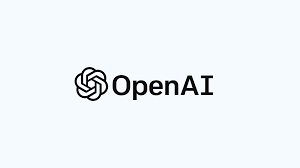Today, GPT-4, OpenAI’s cutting-edge text-generating model, was made generally available, according to an excited release from the company. Through its API, the business is providing developers with access to this ground-breaking technology. Access to GPT-4 will be opened up to new developers by the end of the month, but existing OpenAI API developers with a history of successful payments can already take advantage of it. Based on compute availability, OpenAI intends to gradually raise availability constraints.

Growing Demand for GPT-4
Since March, millions of developers have expressed interest in using the GPT-4 API, creating an enormous demand for access for OpenAI. The variety of cutting-edge products utilising GPT-4 is growing quickly, illuminating the enormous potential that this model offers. In the future, according to OpenAI, a variety of use cases can be supported by chat-based models that are powered by GPT-4.
Read More: GPT-4’s Master Plan
Enhanced Capabilities: Text, Image, and Code Generation

Compared to GPT-3.5, GPT-4 offers a number of improvements. It accepts both text and image inputs in addition to producing text, including code. With this increased capacity, developers will be able to create applications that are more varied and engaging. The performance of GPT-4 on academic and professional criteria is “human level,” indicating its exceptional competency.
Read More: GPT-4 Co-Writes First Book!
Image Understanding: An Upcoming Feature
Although not yet accessible to all OpenAI clients, GPT-4’s image-understanding functionality is something the business is actively exploring with a partner, Be My Eyes. Even though OpenAI hasn’t said when it would be available to more customers, this feature has a lot of potential for a variety of applications.
Fine-Tuning GPT-4 and GPT-3.5 Turbo
OpenAI intends to soon make it possible for programmers to use their data to optimise GPT-4 and GPT-3.5 Turbo. Later this year, this capability—which is currently present for a number of OpenAI’s other text-generation models—will be made public. By fine-tuning models with unique data, developers may customise and optimise the models to meet their unique needs, creating new opportunities for creativity.
Intensifying Competition in Generative AI

GPT-4’s release in March heightened the competition in the field of generative AI. Anthropic, the leading text-generating AI model, increased the context window for its model Claude from 9,000 tokens to an astonishing 100,000 tokens. Tokens are raw text fragments, whereas the context window is the content the model takes into account before creating new text. Searching, summarising, writing, coding, and answering questions are all jobs that Claude excels at.
The Context Window Advantage: GPT-4 Leads the Way
GPT-4 held the greatest context window in the competition, reaching up to 32,000 tokens. Larger context windows in models are advantageous because they enable more coherent and contextually relevant answers by retaining more information from prior encounters. Smaller context windows frequently cause models to “forget” recent talks, which results in responses that go off-topic.
OpenAI’s Expanded Offerings: DALL-E 2 and Whisper
In addition to GPT-4, OpenAI has made its DALL-E 2 (image-generating model) and Whisper (speech-to-text model) APIs generally available. These powerful models broaden the scope of OpenAI’s offerings and provide developers with additional tools for creative and practical applications. OpenAI also plans to deprecate older models available through its API to optimize compute capacity, considering the soaring demand for generative models driven by the popularity of ChatGPT.
Our Say
Some older OpenAI models, notably GPT-3 and its offshoots, won’t be accessible until January 4, 2024. The new “base GPT-3” models from OpenAI will replace, which should result in increased computing efficiency. By January 4, developers who are still utilising the outdated models must manually upgrade their integrations. Beyond that time, anyone who wish to use fine-tuned old models must fine-tune replacements built on the new GPT-3 model base.
During this transition, OpenAI is actively assisting users and ensuring a seamless experience. OpenAI will proactively reach out to developers who have recently utilized the older models in the coming weeks, providing comprehensive details and offering them the opportunity to participate in early testing of the new completion models.
With access for GPT-4, OpenAI keeps expanding the potential of AI. An advanced text-generating model is now available to developers, opening up a world of opportunities for creative applications. The future of AI will grow more exciting and revolutionary as OpenAI develops and broadens its offerings.




